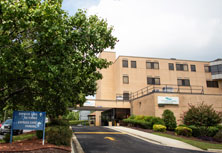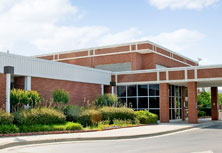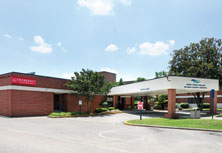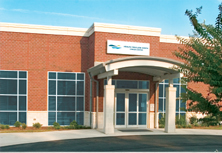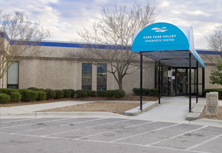Ear Tubes/Chronic Otitis Media
Painful ear infections are a rite of passage for children by the age of five; nearly every child has experienced at least one episode. Most ear infections either resolve on their own (viral) or are effectively treated by antibiotics (bacterial). But sometimes ear infections and/or fluid in the middle ear may become a chronic problem leading to other issues, such as hearing loss, or behavior and speech problems. In these cases, insertion of an ear tube by an otolaryngologist (ear, nose, and throat specialist) may be considered.
What Are Ear Tubes?
Ear tubes are tiny cylinders placed through the ear drum (tympanic membrane) to allow air into the middle ear. They also may be called tympanostomy tubes, myringotomy tubes, ventilation tubes, or PE (pressure equalization) tubes.
These tubes can be made out of various materials and may have a coating intended to reduce the possibility of infection. There are two basic types of ear tubes: short-term and long-term. Short- term tubes are smaller and typically stay in place for six months to a year before falling out on their own. Long-term tubes are larger and have flanges that secure them in place for a longer period of time. Long-term tubes may fall out on their own, but removal by an otolaryngologist may be necessary.
How are ear tubes inserted in the ear?
Ear tubes are inserted through an outpatient surgical procedure called a myringotomy. A myringotomy refers to an incision (small hole) in the ear drum or tympanic membrane. This is most often done under a surgical microscope with a small scalpel, but it can also be accomplished with a laser. If an ear tube is not inserted, the hole would heal and close within a few days. To prevent this, an ear tube is placed in the hole to keep it open and allow air to reach the middle ear space (ventilation).
What happens after surgery?
After surgery, the patient is monitored in the recovery room and will usually go home within an hour or two if no complications occur. Patients usually experience little or no postoperative pain, but grogginess, irritability, and/or nausea from the anesthesia can occur temporarily.
Hearing loss caused by the presence of middle ear fluid is immediately resolved by surgery.
The otolaryngologist will provide specific postoperative instructions, including when to seek immediate attention and to set follow-up appointments. He or she may also prescribe antibiotic ear drops for a few days. An audiogram should be performed after surgery, if hearing loss is present before the tubes are placed. This test will make sure that hearing has improved with the surgery. To avoid the possibility of bacteria entering the middle ear through the ventilation tube, physicians may recommend keeping ears dry by using ear plugs or other water-tight devices during bathing, swimming, and water activities. However, recent research suggests that protecting the ear may not be necessary. Parents should consult with the treating physician about ear protection after surgery.

